The 2014 Razer Blade Review
by Brett Howse on October 10, 2014 9:00 AM EST- Posted in
- Notebooks
- Gaming
- Laptops
- Razer Blade
Design and Chassis
When Dustin reviewed the 2013 model, he said “it’s hard not to compare the Razer Blade 14-inch to Apple’s MacBook Pro” and with the 2014 model, it is fair to say the same thing again but with the Retina MacBook Pro 15 inch model. Though the rMBP is slightly wider and longer to accommodate the slightly larger display, the Z-height and system weight are almost identical. The Razer Blade wins out in resolution and pixel density, with 262.25 pixels per inch compared to 220 of the rMBP. These two systems are targeted towards very different audiences, but it is amazing how similar the actual designs are.
The design of the new Razer Blade is almost identical to its predecessor. The entire system is made of CNC anodized aluminum with a matte black finish. Razer seems to love green accents, so every single accent on the Blade is in green including the USB ports, keyboard backlighting, power LED, and the Razer logo on the back that is backlit as well. The body is incredibly strong, with no flexing or creaking of any part of it. The lid is also aluminum, with two parallel ridges flanking the Razer logo.
The underside has two rubberized feet which run the entire width of the laptop, which provide both grip to keep the Blade from slipping around and a small gap under the Blade to allow the two air intakes to function.
A large part of the design of a laptop with this much potential power usage (37 watt CPU plus a GPU with a TDP around 80-100 watts -- NVIDIA doesn't officially provide any figures) is going to be heat dissipation. Here, Razer has continued with the same type of cooling system as the 2013 model, with two intake fans on the bottom blowing air over a twin pipe heat exchanger. The design then exhausts the hot air out through hidden vents between the display and the back of the chassis. This makes for an aesthetically pleasing appearance since you do not have large vents protruding from the otherwise elegant design. We will see how well the venting performs later in the review.
Sitting above this cooling system is the island style keyboard, which has the distinctive Razer font used for the keys. It is backlit in green with adjustable brightness, and the keyboard feels okay to use considering the lack of travel in the keys. The backlighting is bright and even, but it would be nice if it was color adjustable as well. The green is nice and distinctively Razer, but sometimes you just want to change it up.
Below that is the Synaptics trackpad, which is quite large at 104.8mm (4.125 inch) wide and 63.5mm (2.5 inches) deep. The trackpad is very smooth and supports the Windows 8 gestures as well. Unlike most laptops I have seen lately, the Razer Blade forgoes the click pad and keeps the left and right click buttons as physical buttons at the bottom of the trackpad. Personally I much prefer having actual buttons, but your preferences may be different.
Stereo front facing speakers round out the top of the design, and the sides carry all of the connectivity with three USB 3.0 ports (two left, one right), a 3.5mm jack, and an HDMI 1.4 port. The one missing port is an SD card slot.
The design of the Razer Blade is clean, elegant, and free of the garish adornments of many other gaming laptops. In fact, other than the logo and green lighting, most people would likely not realize it's a high performance gaming notebook by the design. The matte black scheme is very subtle but it is a fingerprint magnet. It would be nice if there was a bit more personalization options such as the keyboard backlighting and possibly the finish, but it is hard to find fault with the scheme they have created since the green is used as the accent color on the entire device.



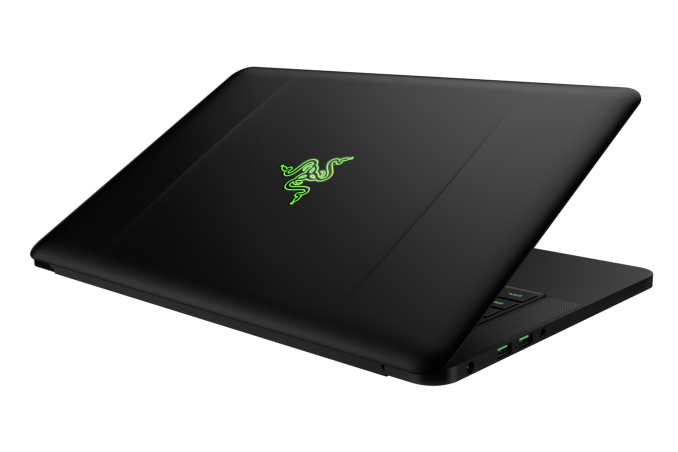
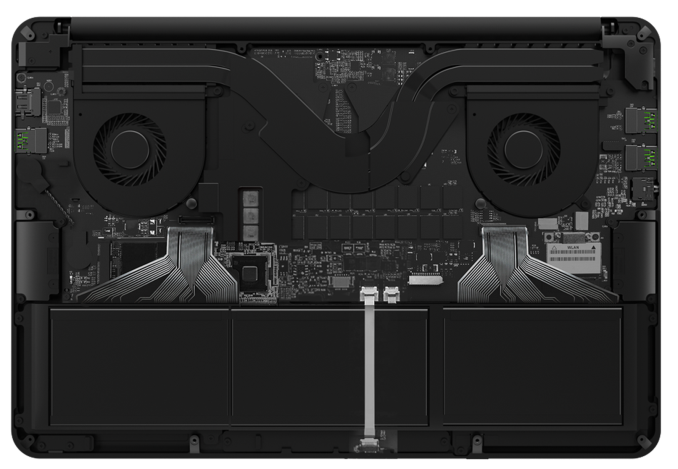
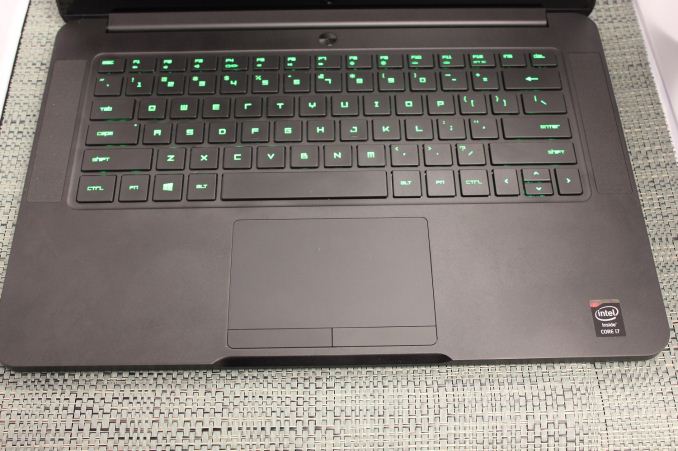
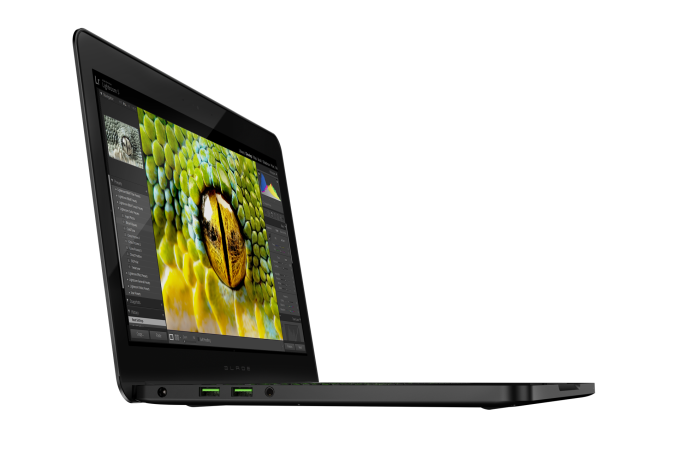
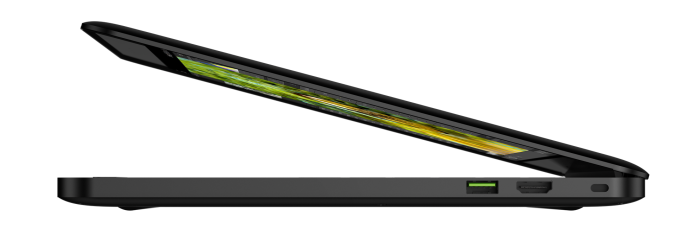














69 Comments
View All Comments
TiGr1982 - Friday, October 10, 2014 - link
Indeed, as a new buy, the unit with Kepler-based GTX 870M became instantly obsolete at the day of release of Maxwell-based GTX 970M.Only an uninformed buyer will buy this now. Or, alternatively, a large discount may help.
TiGr1982 - Friday, October 10, 2014 - link
And 8 GB of RAM for this kind of pricing is not a good offer either.Niavlys77 - Friday, October 10, 2014 - link
Would be great to see a comparison to the Lenovo Y50 - I know it's 1080p screen is terrible, but I'm wondering how the 4k screen holds up to this IGZO panel.Friendly0Fire - Friday, October 10, 2014 - link
I'm fine with my current laptop (Asus UX51), but in a year or two I could see myself upgrading to this. Nvidia's Maxwell will probably make a significant difference on battery life and heat on a machine like this, so I'm excited to see the 2015 refresh.dmunsie - Friday, October 10, 2014 - link
For the gaming performance section, would it be possible to get the rMBP in there as well? Perhaps not OS X, since there is a lot not available on the OS X side. But certainly running Windows 8.1 would be doable and nice to know.frostyfiredude - Friday, October 10, 2014 - link
It has a GT750m, expect around 60% of the performance gotten by the 2013 Blade 14.aferox - Friday, October 10, 2014 - link
Would like to see this compared with the Gigabyte Aorus X3 Plus.frelledstl - Friday, October 10, 2014 - link
I just don't get the fascination with these higher than 1080p displays on a gaming notebook when the hardware just doesn't support that resolution with playable frame rates in newer games. At minimum if you are going to benchmark at 1080p, we need some kind of analysis on how the display handles scaling down to the lower resolution. 14 inches to me is the best size for a portable gaming laptop, but I can't help but think that something like the W230ss is just a better value for the money by far with its still nice 1080p IPS screen.. You can get a decent configuration of that for $1200-$1400 with a nice sized SSD and since the SS version is there 2nd gen version of that laptop, they have included some nice power optimization improvements. I think 2k-4k gaming is great, on a desktop that might stand a chance at actually providing decent frame rates at high detail settings.XabanakFanatik - Sunday, October 12, 2014 - link
I'll tell you from personal experience that I have played games accidentally set to 1080p and did not realize I was not at native resolution. A more thorough analysis of scaling would be nice, but I have no complaints.synaesthetic - Monday, October 20, 2014 - link
I raised this point myself but I noticed the non-standard resolution of 3200x1800. That's exactly four times 1600x900, which *is* a standard resolution. The performance figures at 1080p suggest that this laptop would run most games extremely well at 1600x900 and since the resolution is divisible four times into the native resolution, it shouldn't have any fuzziness or loss of sharpness from interpolation.